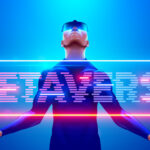Virtual reality has reached a breaking point in which every small step could set up the future of this technology. During the past years, we saw a recurring trend in the entire technology business: machine learning. Many are, in fact, the companies who are trying to develop tools that are focusing on automatically understand the client’s needs, without any input. This recently has moved to the Virtual Reality world, which is indeed moving in that direction, especially within his mobile subpath. Let’s break down how a very well structured machine learning algorithm is impacting the worldwide VR business.

SLAM and Floor Algorithms
Simultaneous Localization And Mapping is the reason why many developers are moving to VR-related forms of coding. SLAM is a technology that permits to create (by using sensors, which are transmitting data to a central brain) a high-quality representation of the physical surroundings, into the virtual world and vice versa. SLAM started moving within the automotive sector, with applications like TESLA’s Summon Feature and Volvo’s autopilot, which are both using this strategy, in order to better translate the pieces of information coming from outside.
Floor algorithms (the ones used by QR codes to clarify) are also almost dead technology, given the fact that SLAM-based ones are able to read those in a faster, more precise way.
Mobile-Friendly Structure
Machine learning has always been a deep focus in mobile app development, especially given the fact that smartphones have evolved a lot since their first models. With AR and VR dominating games that made famous companies like Niantic (to list one), we can easily expect the implementation of SLAM into apps that are not just gaming related. This, combined with the fact that machine learning will most likely guide the core of each one of these apps, highly puts both these technologies into the spotlight, especially for those companies who are heavily investing in the matter.

Faster Learning With Better Data
SLAM and Machine Learning will work together and they will help each other with inputs and adaptive learning: while one (SLAM) will provide better data of what is going on within the outside world, the other one will process the above-mentioned data in order to better create an environment that truly represents the real world. This last part is currently used in TESLA’s new autopilot, that, by using a combination of high-level reactive sensors and an adaptive learning central brain, is able to tell the car where to stop for a charge and is, most importantly, able to quickly process a critical situation.
Author info

Paul Matthews is a Manchester based business writer who writes in order to better inform business owners on how to run a successful business. You can usually find him at the local library or browsing Forbes’ latest pieces.
Discover more from TechBooky
Subscribe to get the latest posts sent to your email.















